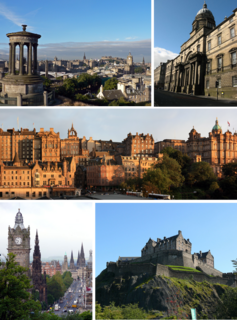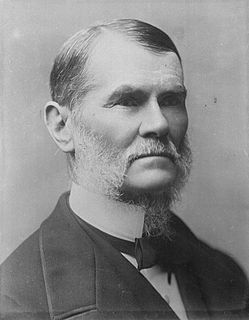
Rupert's Land, or Prince Rupert's Land, was a territory in British North America comprising the Hudson Bay drainage basin, a territory in which a commercial monopoly was operated by the Hudson's Bay Company for 200 years from 1670 to 1870. The area once known as Rupert's Land is now mainly a part of Canada, but a small portion is now in the United States. It was named after Prince Rupert of the Rhine, a nephew of Charles I and the first Governor of the Hudson's Bay Company (HBC). In December 1821, the HBC monopoly was extended from Rupert's Land to the Pacific coast.

The Red River Rebellion was the sequence of events that led up to the 1869 establishment of a provisional government by the Métis leader Louis Riel and his followers at the Red River Colony, in what is now the Canadian province of Manitoba. For a period it had been a territory called Rupert's Land under control of the Hudson's Bay Company.
George Anderson may refer to:

Sir John Christian Schultz, was a Manitoba politician and businessman. He was a member of the House of Commons of Canada from 1871 to 1882, a Senator from 1882 to 1888, and the fifth Lieutenant Governor of Manitoba from 1888 to 1895.

Sir Francis Godschall Johnson was a Canadian office holder. He was appointed Lieutenant Governor of Manitoba on April 9, 1872, but had his commission revoked before he was sworn in. In 1889, he was appointed the 4th Chief Justice of the Province of Quebec.
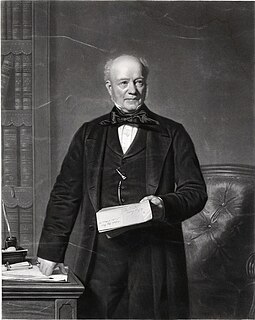
Sir George Simpson was the Governor-in-Chief of the Hudson's Bay Company during the period of its greatest power. From 1820 to 1860 he was in practice, if not in law, the British viceroy for the whole of Rupert's Land, an enormous chunk of northern North America.
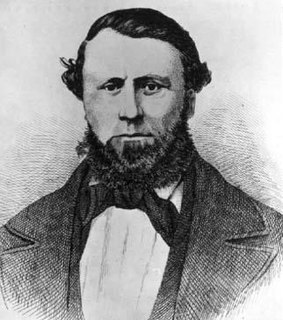
Louis Riel Sr. (père) was a farmer, miller, Métis leader, and the father of Louis Riel.
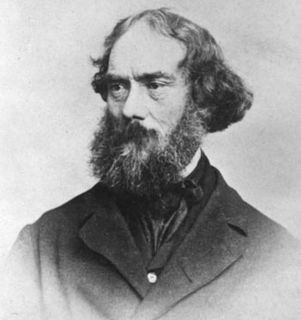
William Mactavish was a Scottish-born Hudson's Bay Company (HBC) clerk, accountant, and chief trader. Mainly known for his dual-position as Governor of Assiniboia, and Governor of Rupert's Land, Mactavish played a major role in the development of Western Canada. Often referred to as, "The Last Governor of Assiniboia," Mactavish is frequently criticized for his role in the Red River Rebellion.
Doctor William Cowan was a physician and fur trader.
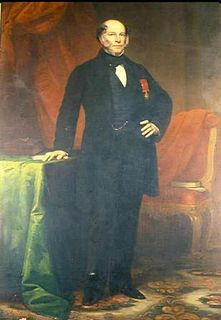
Sir Edward Deas Thomson, was an Australian administrator, politician and chancellor of the University of Sydney.
James McKay was a fur trader, pioneer and pre Canadian confederation politician and interpreter.

The Selkirk Concession was a land grant issued by the Hudson's Bay Company (HBC) to Thomas Douglas, 5th Earl of Selkirk, in 1811. The HBC held a commercial monopoly in Rupert's Land, consisting of the entire Hudson Bay drainage basin. The Selkirk Concession, also known as Selkirk's Grant, included a large section of the southwest area of Rupert's Land, bounded: on the north by the line of 52° N latitude roughly from the Assiniboine River east to Lake Winnipegosis, then by the line of 52° 30′ N latitude from Lake Winnipegosis to Lake Winnipeg; on the east by the Winnipeg River, Lake of the Woods and Rainy River; on the west roughly by the current boundary between modern Saskatchewan and Manitoba; and on the south by the rise of land marking the extent of the Hudson Bay watershed. This covered portions of present-day southern Manitoba, northern Minnesota and eastern North Dakota, in addition to small parts of eastern Saskatchewan, northwestern Ontario and northeastern South Dakota.
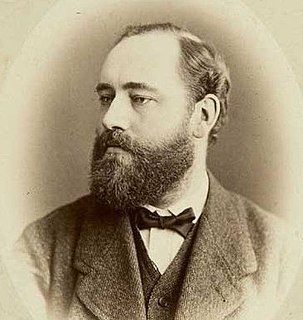
Joseph James Hargrave was a Hudson's Bay Company fur trader, author, and journalist.
Alexander Christie was a fur trader and Governor of the Red River Colony from 1833 to 1839 and from 1844 to 1846. He is considered one of the most influential chief factors in the Hudson's Bay Company (HBC) during his career, and in recognition of his services was granted a half share in the company's profits for two years beyond the normal retirement period.
Andrew Graham Ballenden Bannatyne was a Canadian politician, fur trader and leading citizen of Winnipeg, Manitoba.
Thomas Bunn was a Metis farmer and political figure in Manitoba. He represented St. Clements from 1870 to 1874 in the Legislative Assembly of Manitoba.
Duncan Finlayson was a Scottish-born officer in the Hudson's Bay Company. He served as governor of Assiniboia, also known as the Red River Colony, from 1839 to 1844.


